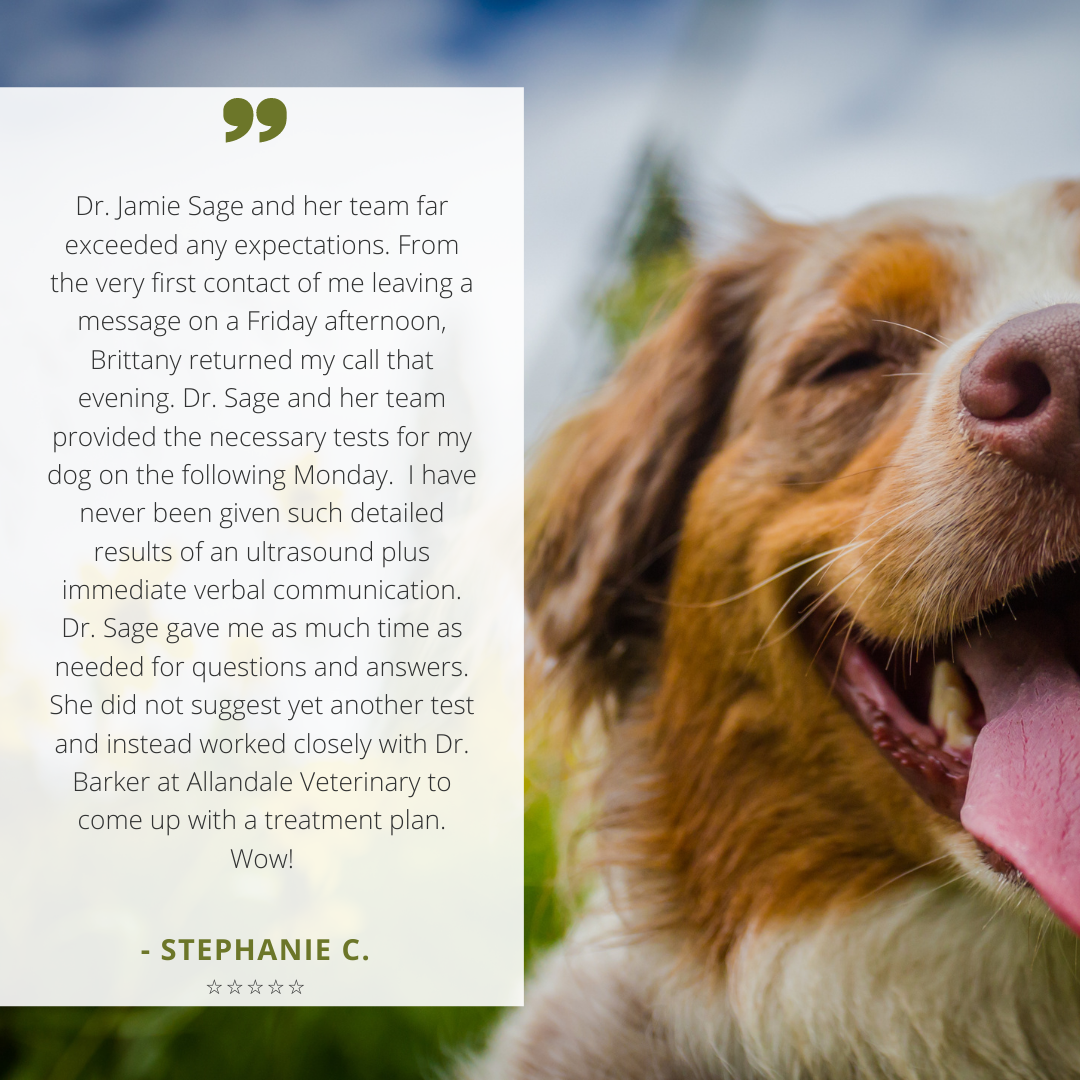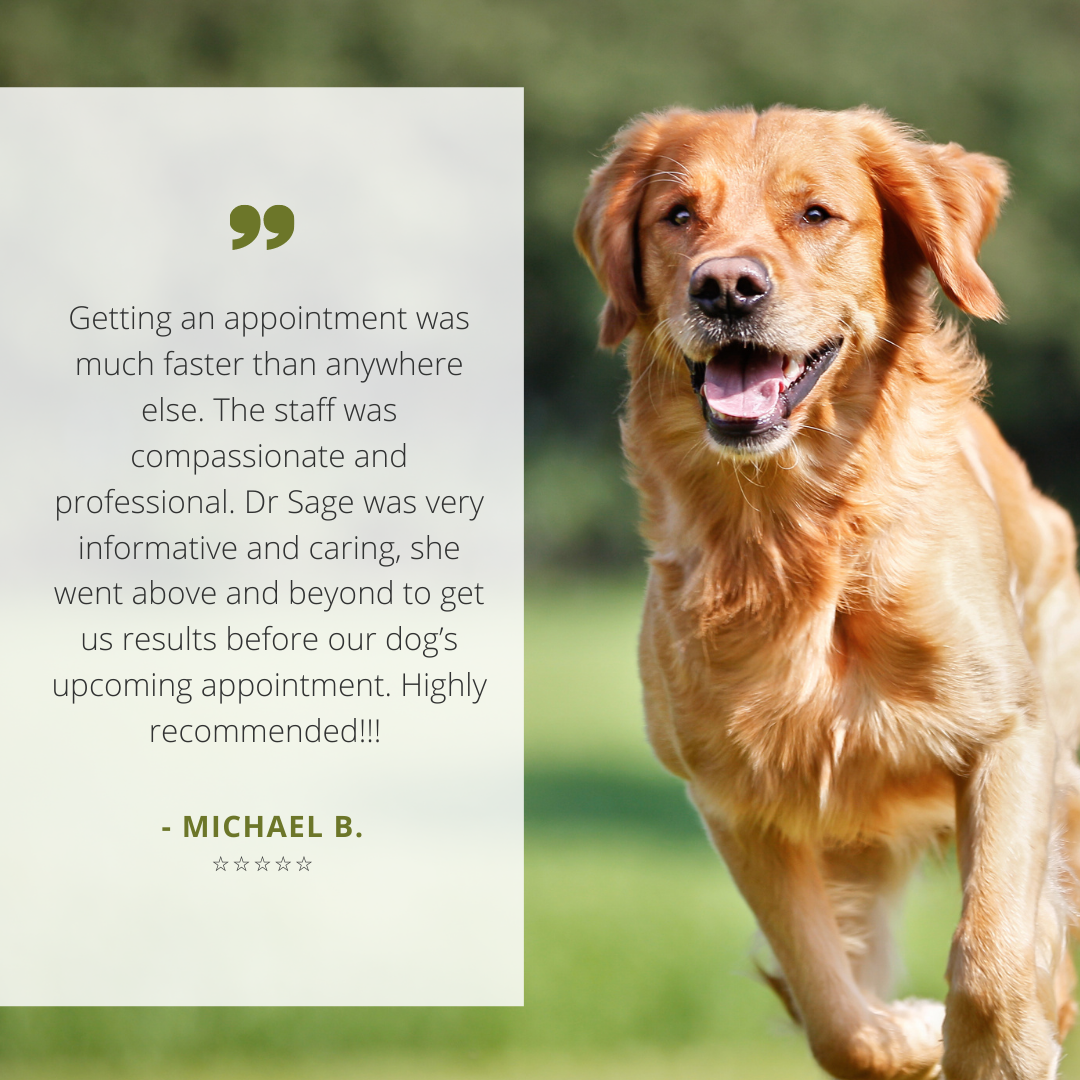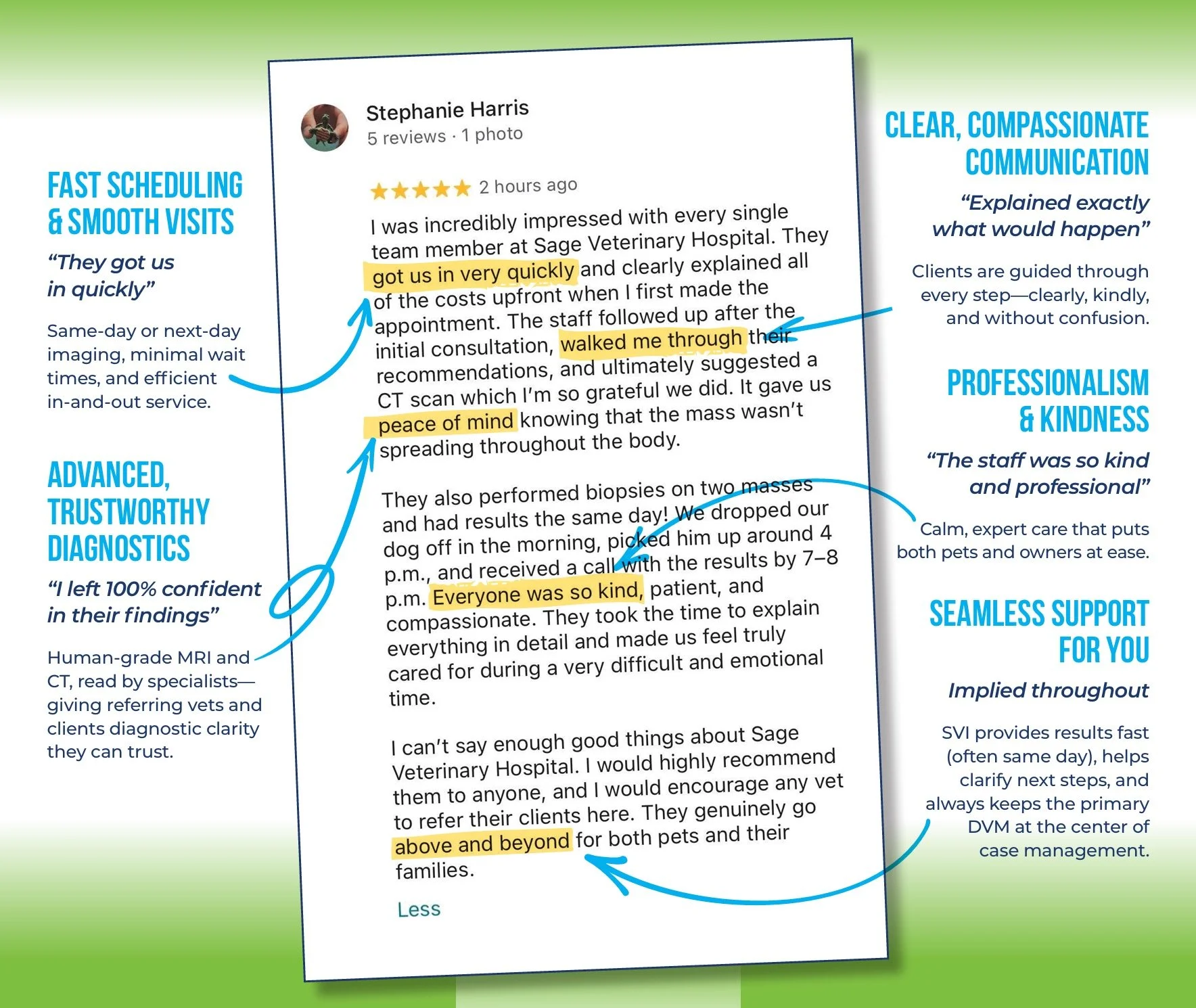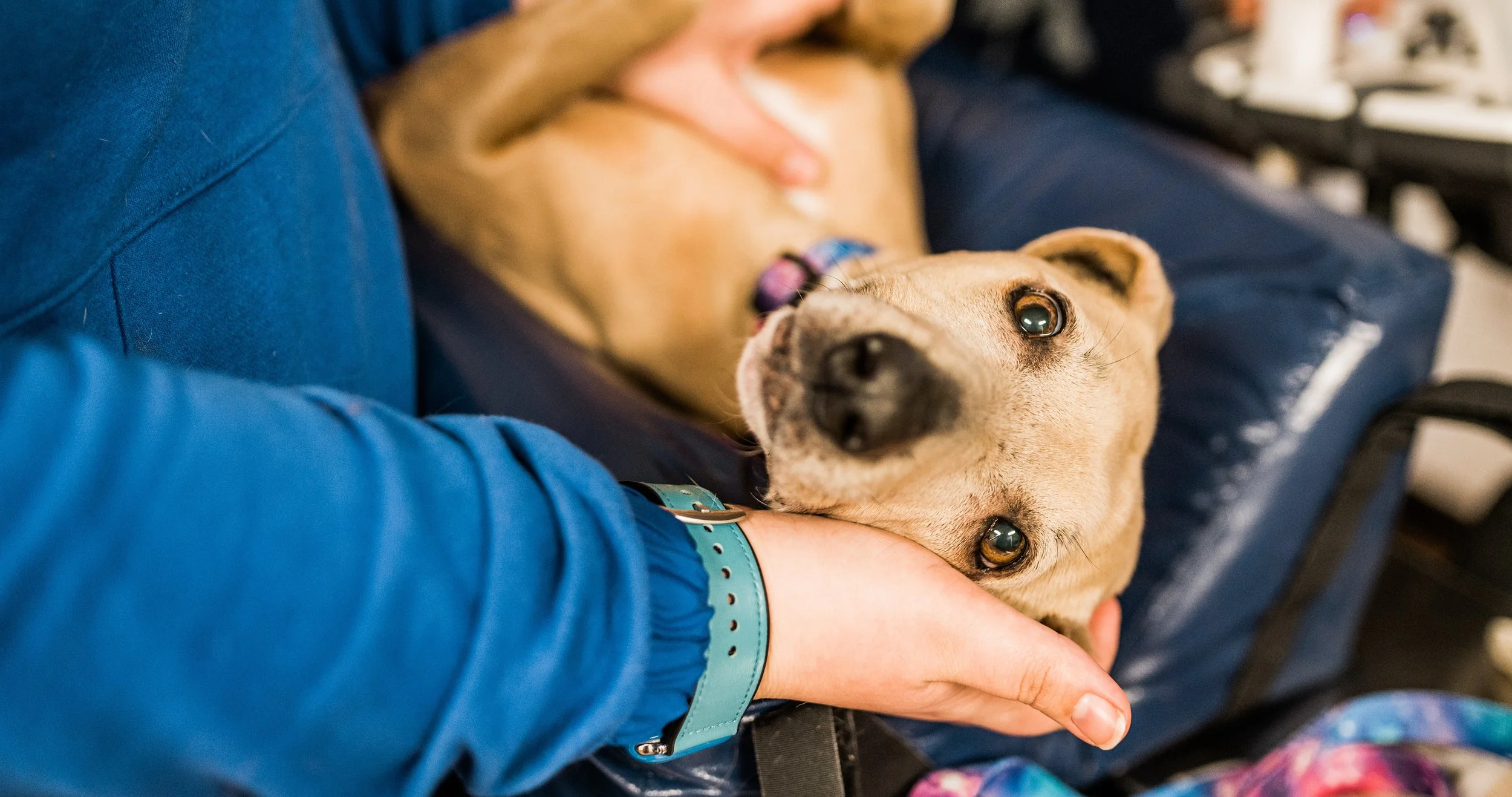
We get ANSWERS for pets.
Pet’s can’t tell you where it hurts, but we can.
Discover the cutting-edge imaging services and state-of-the-art facilities available at Sage Veterinary Imaging®. Our advanced technology allows us to quickly diagnose your pet’s condition with precision and care.
Serving pets and their parents in three locations:
Human-quality diagnostic imaging for pets
At Sage Veterinary Imaging®, we offer a range of cutting-edge services to help diagnose and treat your pets. Our state-of-the-art facilities include 3T MRI, 128 slice CT, ultrasound, echocardiography, image-guided biopsies, and digital cytology. With our advanced technology and experienced team, we provide quick and accurate answers, allowing your veterinarian to effectively address your pet's health concerns.
How we get answers for pets
Meet our imaging experts
What people are saying
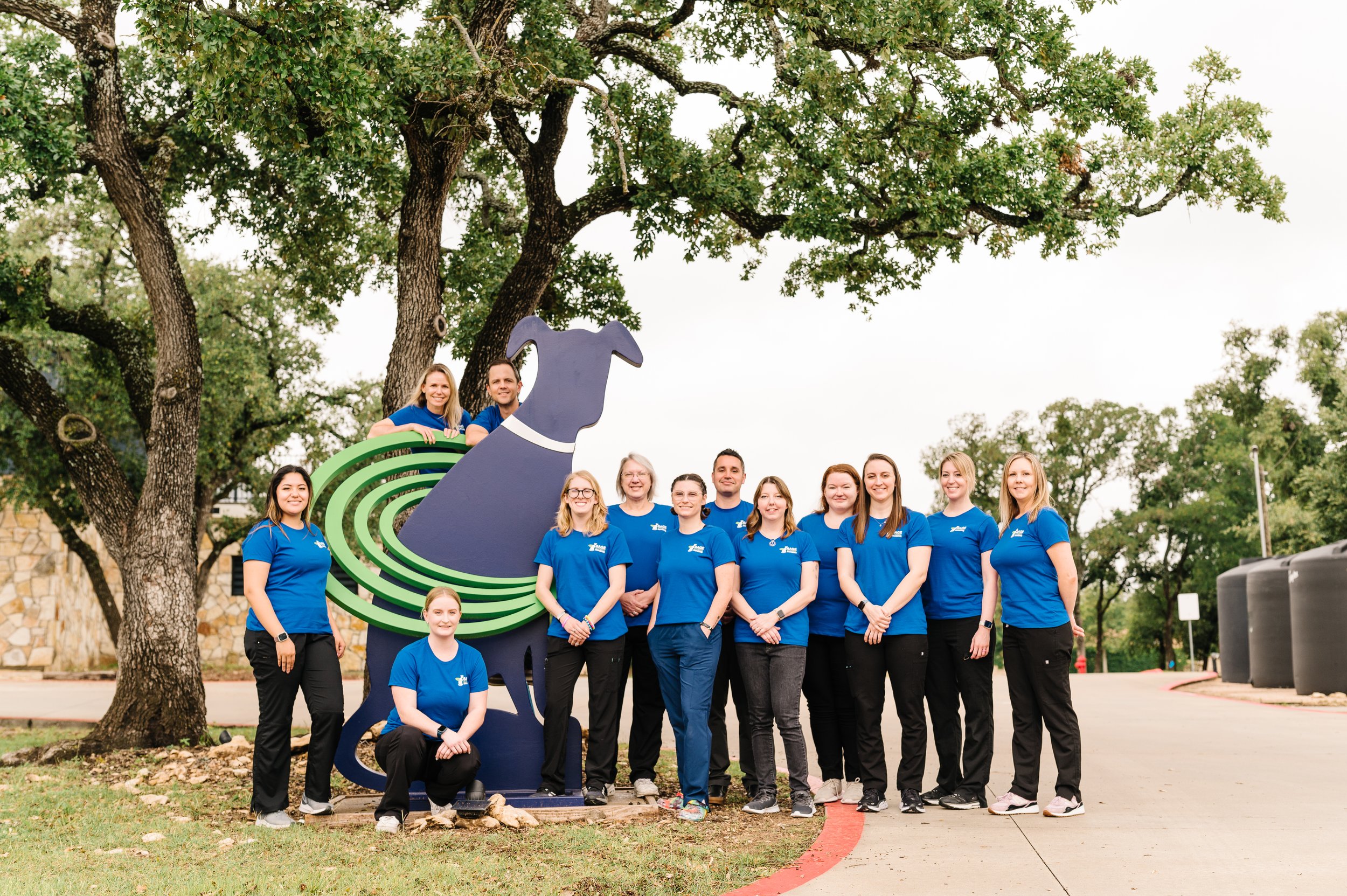
We are here for you.
Whether you are a referring veterinarian or an owner, we are here to make the imaging process as smooth and worry-free as possible.
Patient-centered veterinary care
Our patient-centered approach is at the heart of everything we do at Sage Veterinary Imaging®. We integrate our diagnostic imaging services with the rest of your pet’s care team, including the other specialists who may be involved in treatment decisions. Radiologists often act as a conduit for critical treatment decisions and collaboration between other specialists after imaging is completed, meaning they see how the puzzle pieces fit together. This gives us the experience to help guide owners and their veterinarians toward the most prudent next steps in treatment.
Communication, clarity, & confidence
If it’s not 3T, you could be missing something!
Research-grade MRI allows faster and more accurate diagnosis. for small-breed dogs and cats
We produce images at roughly twice the resolution in half of the time, compared to more common 1.5T systems. This means your pet spends less time under anesthesia and we get the best possible images to help you plan treatment. The superior resolution of our 3 Tesla MRI produces more detailed images, which are beneficial when diagnosing pathological conditions involving the brain, spine, and musculoskeletal system. The resolution and clarity also allow radiologists to identify smaller lesions and anatomical structures that cannot be seen with less powerful machines, especially in smaller breed dogs and cats. It also lowers the risk of distorted images, thus eliminating the need for repeated scans, and allows for more sophisticated imaging procedures with more accurate diagnosis.
Ultrasound and echocardiography
The right experience combined with the right equipment gets the right answers. With our state-of-the-art Samsung ultrasound system, and experience with thousands of cases, we can visualize disease processes more clearly and perform biopsies more accurately to get you the answers you need.
Fine needle aspirates
CSF taps
Joint tap
Abdominocentesis
Thoracocentesis
Same-day in-house digital cytology
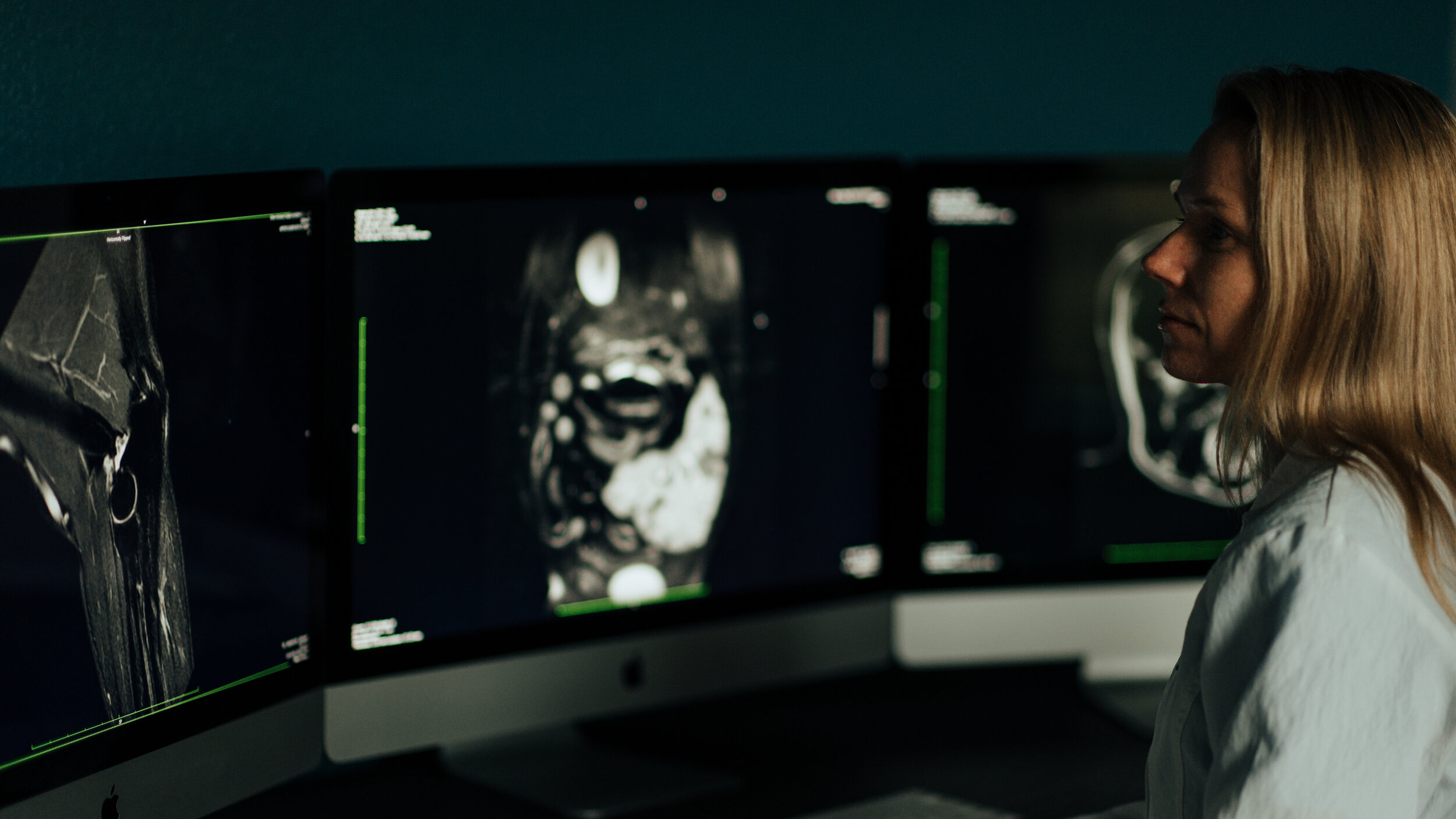
“Buddy had surgery to remove a cyst that was pushing on his spine and causing paralysis.
Thank you Sage Veterinary Imaging for giving us the opportunity to have these special memories with our fur baby!.”
— Heather G.
Why does my pet need an MRI?
Here are some common themes we see in patients coming to us for an MRI:
Unusual changes in behavior such as circling, persistent head tilt, or depression
Seizures
Unsteady gait
Foot dragging
Back pain
Lameness of shoulder or knee
Chronic nasal discharge
Oral tumors
Metastatic disease
Cancer surgery planning
Defining the margins of a tumor
Pre-surgical check for metastatic disease
Is MRI safe for my pet?
MRI scanners have been safely used in animals and people for years. MRI uses strong magnetic fields to form images, and does not involve X-rays or the use of ionizing radiation, which distinguishes it from radiographs, CT and PET scans. Magnetic fields can interrupt function of pacemakers but is otherwise harmless.
Why is anesthesia required for MRI?
Anesthesia is usually necessary MRI procedures, as the patient must stay perfectly still for several minutes to acquire a quality scan. The risks of anesthesia are generally low but vary with the age and medical state of the patient. We minimize anesthesia risks by choosing the safest methods possible and providing state of the art anesthesia and monitoring equipment, monitored by experienced personnel.
What is a board-certified veterinary radiologist?
An American College of Veterinary Radiology (ACVR) Diplomate is a veterinarian with advanced training, board certified in either Radiology (Diagnostic Imaging) or Radiation Oncology (Radiation Therapy). Some ACVR Diplomates are dual boarded in both specialties. The ACVR Diplomate has been certified as a specialist in veterinary radiology or veterinary radiation oncology (or both specialties) by the ACVR and has earned the right to be called a Recognized Specialist in Diagnostic Imaging or Recognized Specialist in Radiation Oncology by the American Veterinary Medical Association (AVMA).
American College of Veterinary Radiology (ACVR) board certified radiologists spend at least three years after achieving their veterinary medical degree (DVM or VMD) focusing strictly on the application of these imaging modalities to determine a diagnosis.
The concentrated training in radiology allows the ACVR Veterinary Radiologist to keep current with frequent advances in noninvasive diagnostic imaging and radiotherapy procedures.
Ask your veterinarian if the imaging or radiotherapy procedures require a specialist.


